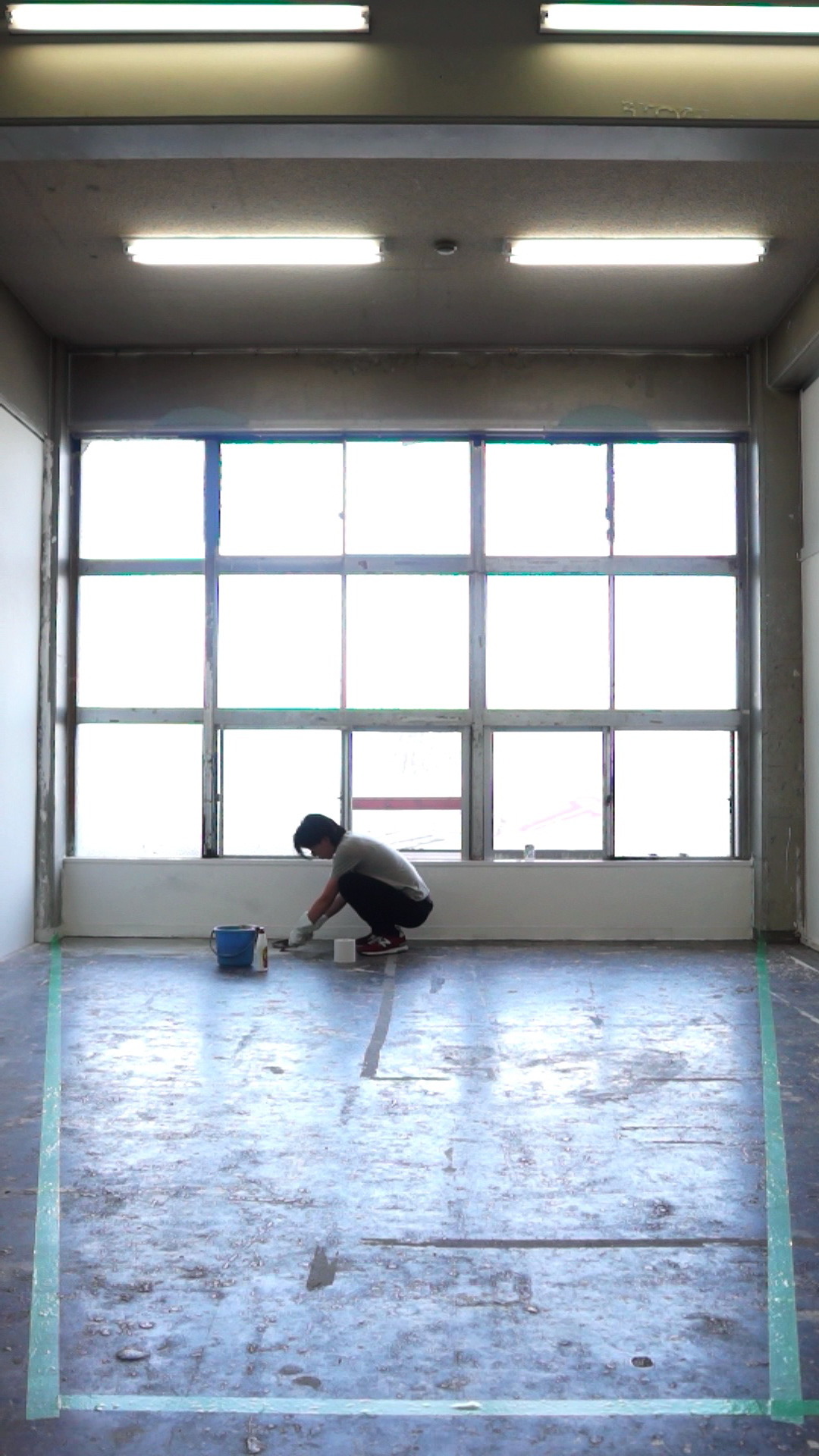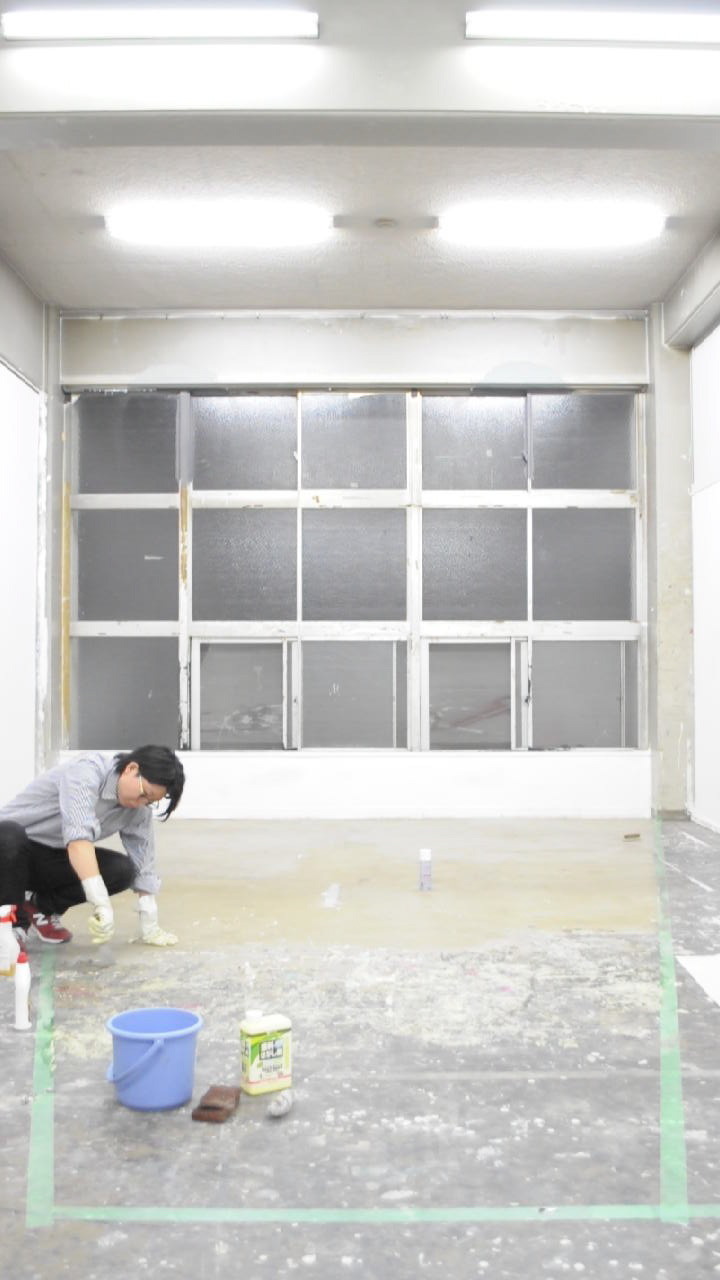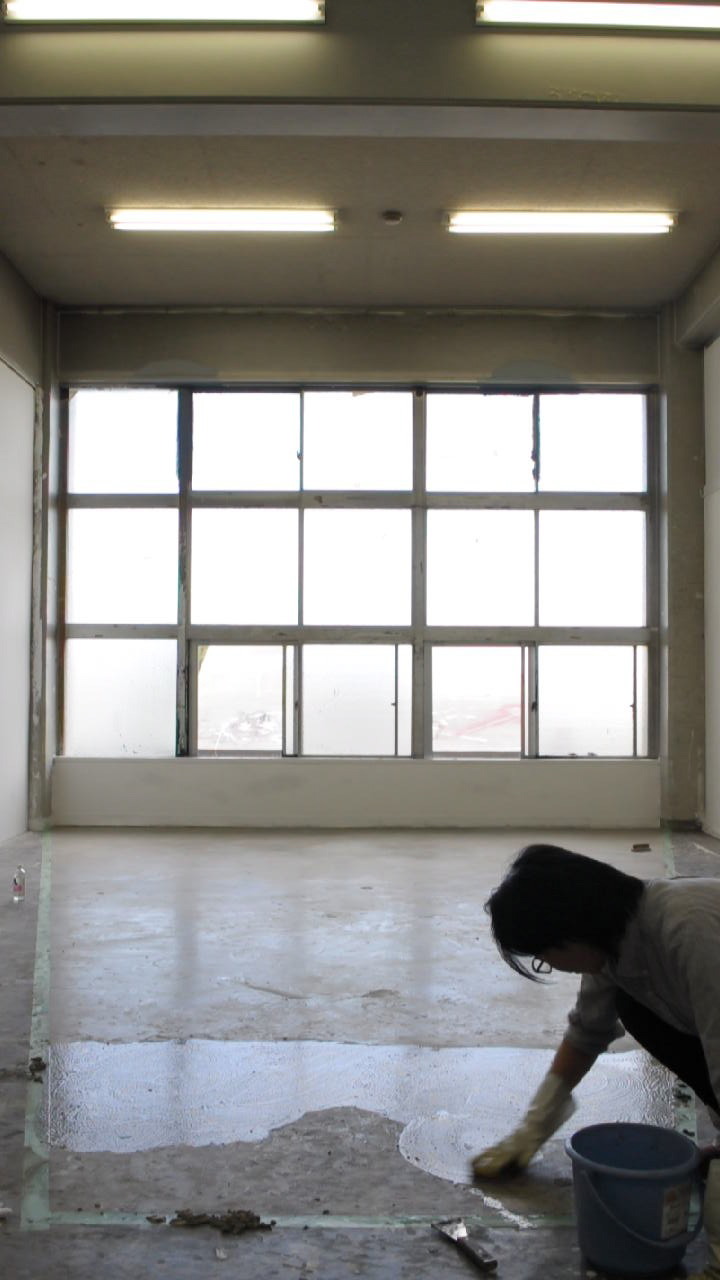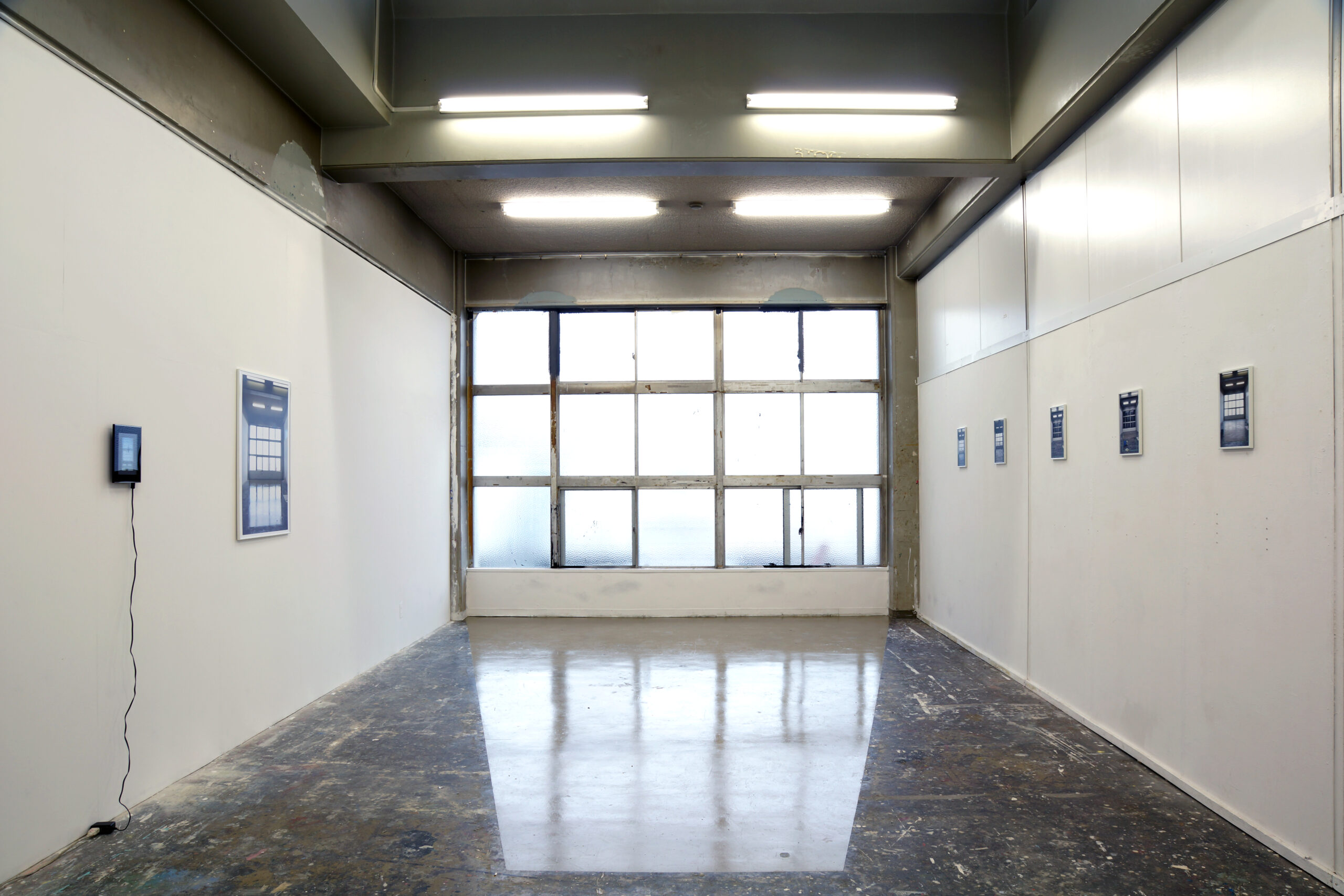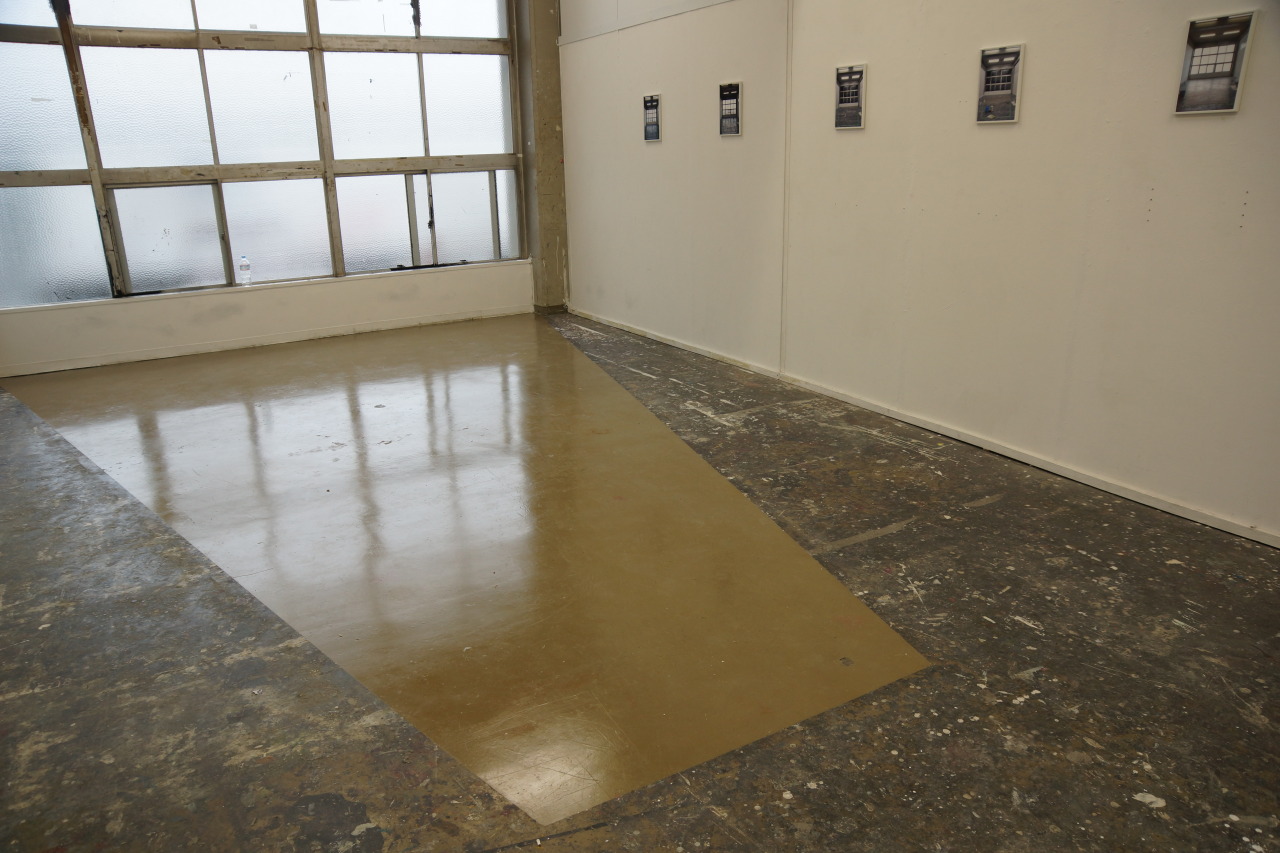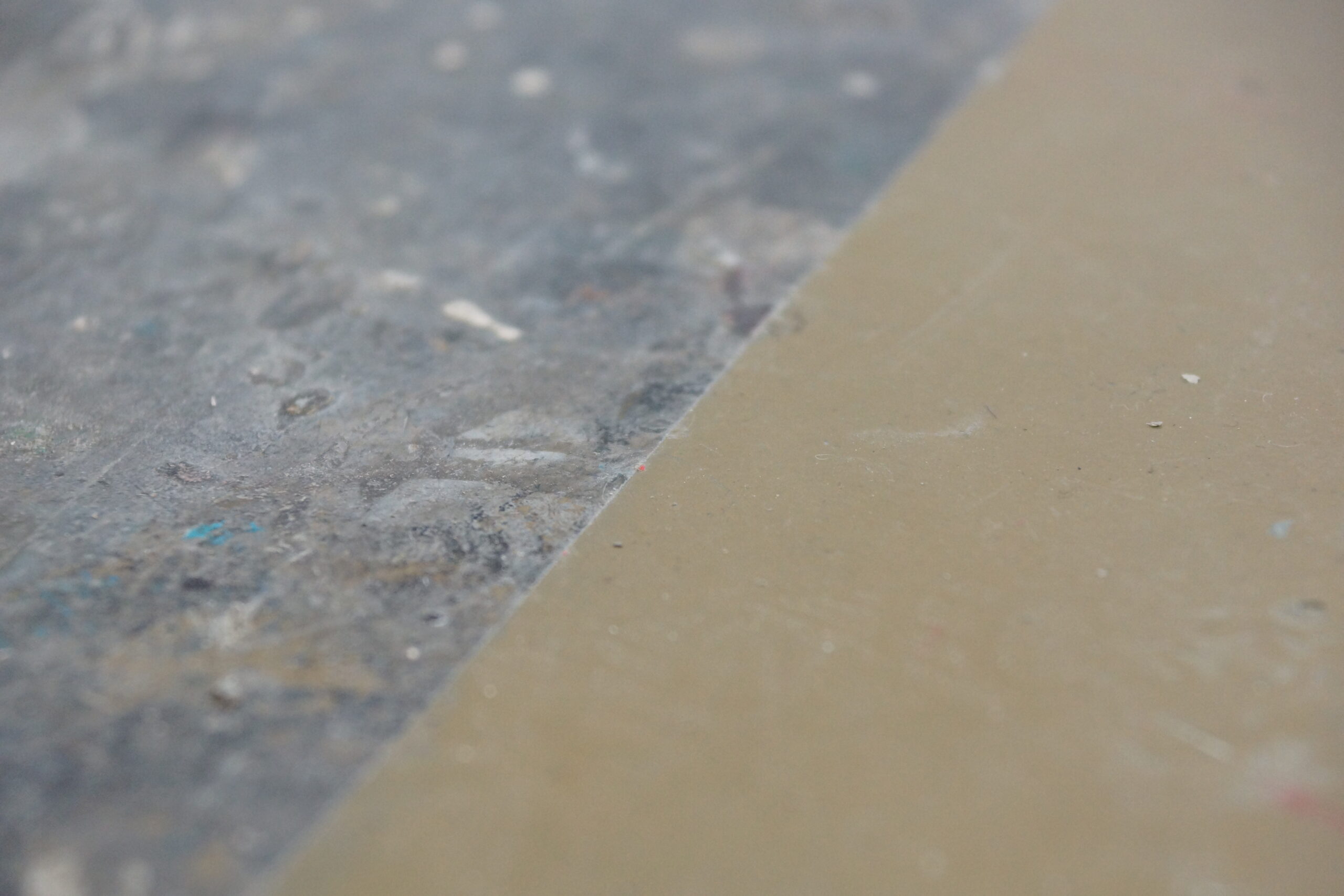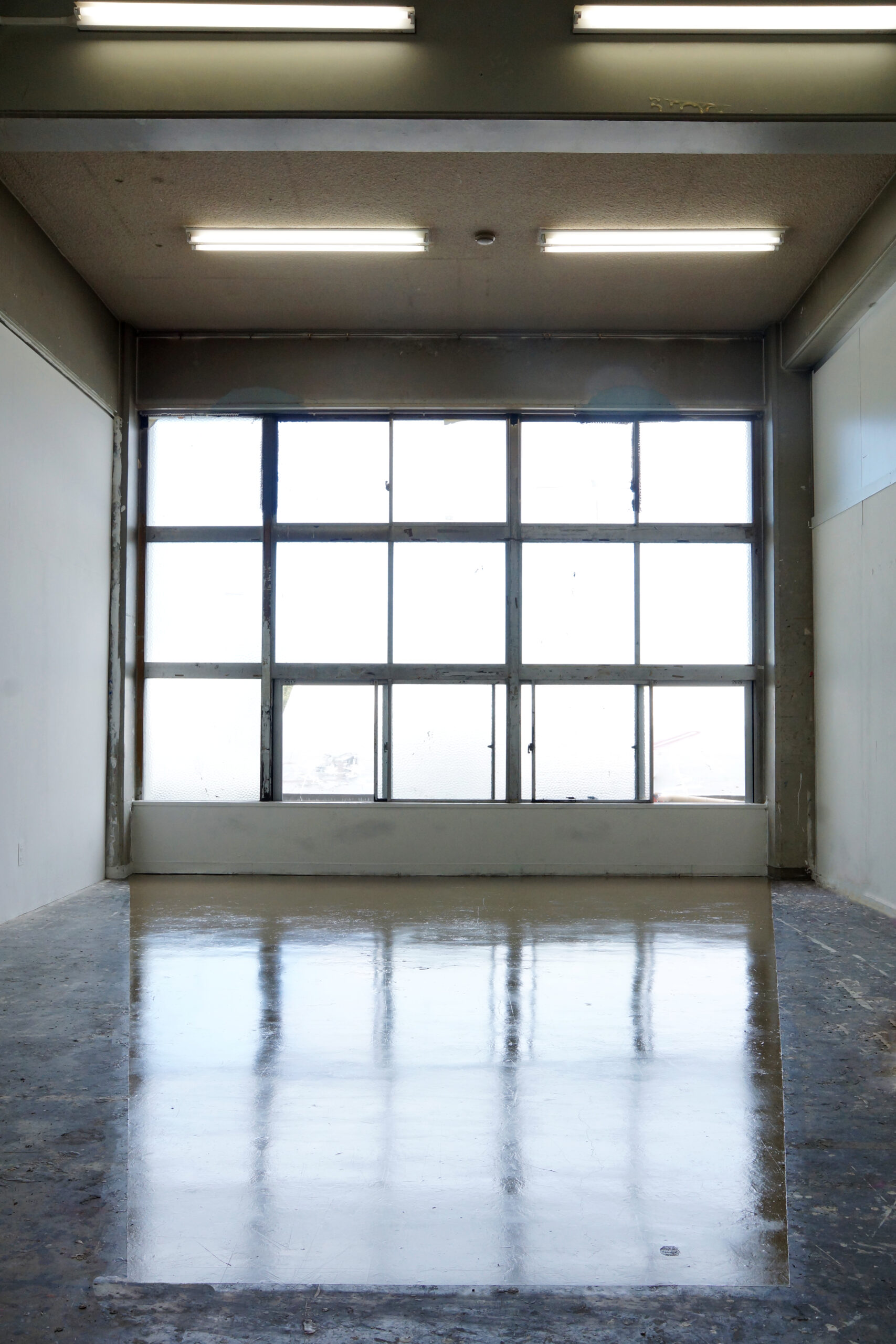

The Void Routine 空虚なルーティン
- Date
-
2014
- Venue
-
多摩美術大学 絵画棟アトリエ
- Media
-
The cleaned floor, the video of cleaning process, digital print
掃除された床、映像、写真
If the things get dirty, we clean them. However, the next moment dirt or dust starts to accumulate.
We can only keep it clean temporarily, even if we keep on cleaning all the time.
Chaos comes back easily in spite of the desperate efforts to prevent it from invading our universe. It is endless work to keep order in the world where human beings live. The act of cleaning resembles it in that it involves intrinsic meaninglessness.
The act of cleaning has structure that loops in the closed algorithm, and its meaninglessness can be in void, like a ceremonial action.
Imagine a floor that lost its original form as layers of paint and dust gathered, where human beings did not prevent the chaos. I repeat actions such as “scrape”, “scrub” and “wipe” to return it to the original state. Further, I dare to set the boundary between the cleaned and the dirty floors. Because it may enable us to perceive the difference, like Japanese traditional ceremony does.
I can create the void space in the dynamics of the void routine. Also, the process of that routine bears the fantastic dynamics.
汚れがたまる。
掃除をして、きれいにする。
しかし、掃除した次の瞬間から汚れはじめていく。いくら掃除をしても、きれいなのは一時である。
世界に無秩序が乱入してくるのを必死に防いでも、押し戻したはずの無秩序はすぐに戻って来るからだ。
人間の生きる世界で人間の秩序を保つというのはエンドレスの作業であり、その根源的な無意味性が掃除という行為に在る。掃除という行為はループする閉じたアルゴリズムの構造をもっており、その行為の無意味性 は儀礼行為のように空虚なものといえる。
無秩序が押し戻されることなくペンキや絵の具が積層し、元の姿を失った床。
その床を「削る」、「こする」、「拭く」、という同じ行為の繰り返しによって、かつての姿へと戻していく。
そして、掃除された床とそうでない床にはあえて境界を設けた。儀礼がそうであるように、境界をつくること は差異の知覚を可能とさせるからである。
空虚なルーティンのダイナミクスによって、空虚な場をつくりだす。また、ルーティンのプロセスそのものにもダイナミクスは孕むのである。
